We are now tantalisingly close to the knockout stages of the 2022 World Cup, with teams booking their place in the round of 16 already. Prior to yesterday’s fixtures, Group C was still wide open, with a number of possibilities for qualification. However, Argentina were able to put their second win on the board with a 2-0 victory over Poland, securing their place in the knockout rounds as group winners – it’s not all bad news for Polish fans, though, as their team finished in 2nd place, extremely narrowly above Mexico to book their place in the round of 16.
This tactical analysis will provide some insight into how Argentina used flexibility and fluidity in their attack tactics, as well as an analysis of their shape off the ball and how that impacted Poland’s performance.
Lineups
Poland boss Czesław Michniewicz sent his side out in a 4-4-1-1 shape that looked to limit the attacking opportunities for Argentina. Jakub Kiwior partnered the experienced Kamil Glik in defence, with Premier League man Matty Cash continuing at right-back. In midfield, Piotr Zieliński operated from the right flank, with RC Lens man Przemysław Frankowski playing on the left in a midfield unit that was unchanged from their 2-0 over Saudi Arabia. In fact, the only change in the starting lineup against Argentina saw Karol Świderski come into the side, playing the supporting striker role behind Robert Lewandowski.
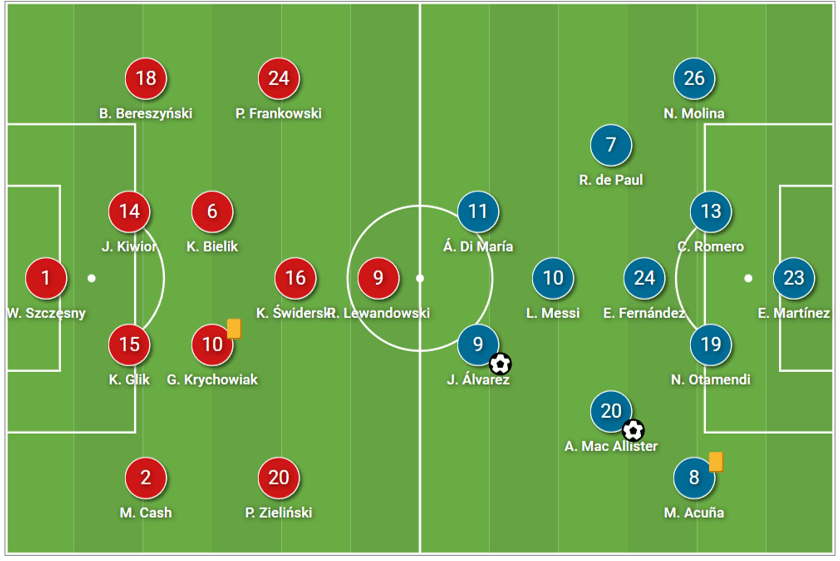
Argentina shaped up in a rather narrow shape – 4-3-1-2, with PSG man Lionel Messi operating from a central area in an advanced midfielder role. Manchester City striker Julián Álvarez partnered veteran Ángel Di María up front. Going forward then, it looked as though Argentina were leaning into the technical aspect of their attack – they aren’t a hugely physical team anyway in terms of height and aerial presence, and this shape and lineup give them that attacking fluidity against a tough opponent. In midfield, Enzo Fernández played a central midfield role, with Alexis Mac Allister and Rodrigo de Paul playing on either side of him. Tottenham Hotspur man Cristian Romero started in the heart of defence next to the vastly experienced Nicolás Otamendi.
Argentina’s midfielders and wing-backs in possession
There is a high level of individual quality in the Argentina squad, which is why manager Lionel Scaloni allows so much flexibility and fluidity in possession. By this, we mean you will often see players playing in positions that don’t reflect their place in the starting line-up. One example would be Di María – he started the game as a centre forward, and while he did play that role well, he also frequently drifted out wide and played as a right winger. In this segment, though, we focus on how the Argentina midfielders and wing-backs operated in attack, as their positioning and shape were huge factors in their win.
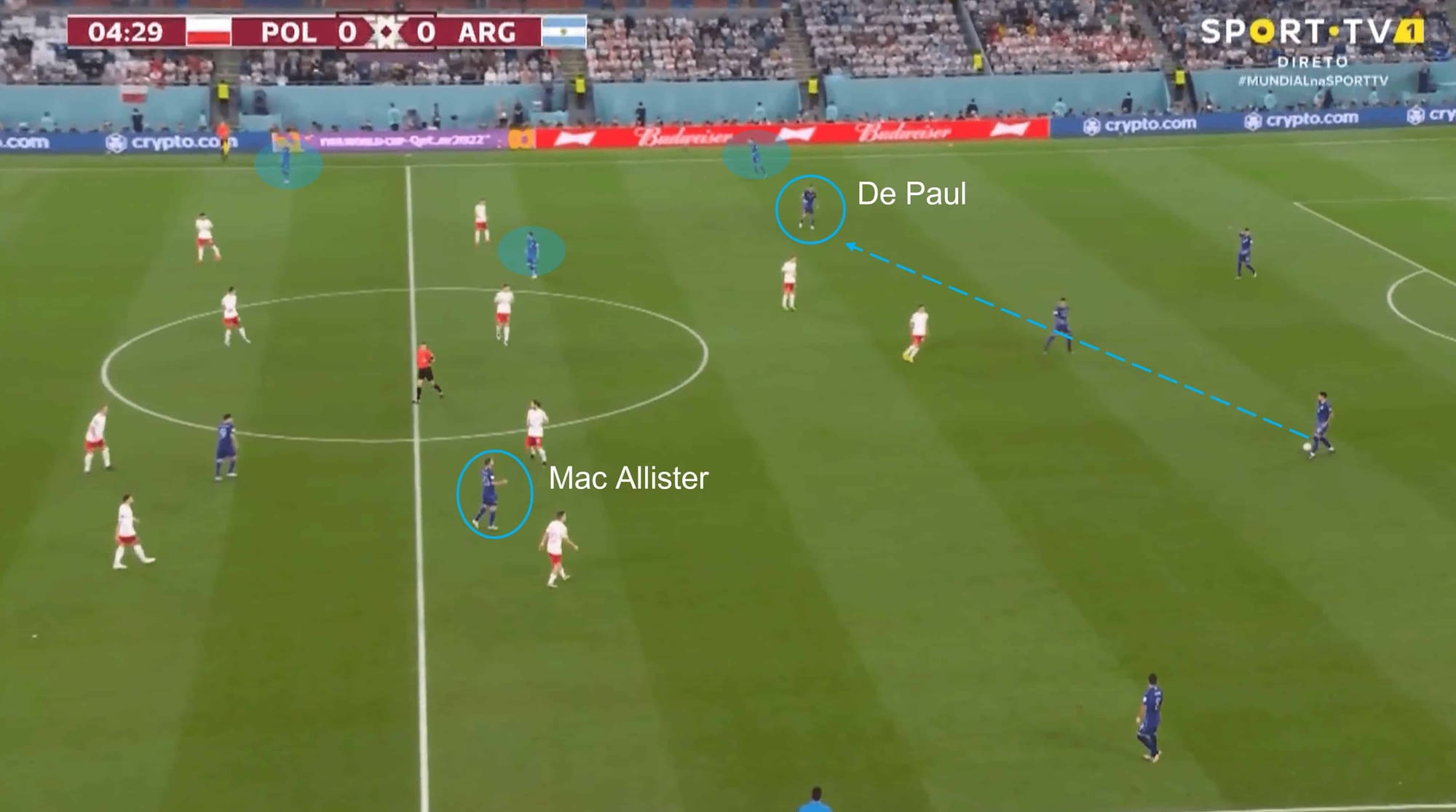
One pattern that emerged over and over again was the individual positioning of the midfielders. Again, this would not remain the same throughout the game, with midfielders interchanging with each other in different scenarios. But the most frequent one in terms of contributing to possession and progression up-field was the one seen above. De Paul would often drop/stay deeper, but not centrally, drifting slightly wider as he would rarely be marked in this area.
This was a clear part of Argentina’s tactics, not a one-off. De Paul would receive the ball, and this is where individual quality and decision-making come into play. At first glance, it’s easy to say that he should receive the ball and play a pass out to the right flank with his second touch, and Argentina find themselves in space on the flank with a numbers advantage. Sounds dangerous, doesn’t it? Unfortunately for De Paul and Argentina, he lacked the quality in this scenario, giving the ball away not once, but twice.
Notice Mac Allister’s positioning too: like De Paul, he would drift into a slightly wider area just off-centre but push into that attacking midfielder role fairly often. This, combined with De Paul’s movement, made it very difficult for Poland to deal with Argentina’s midfield.
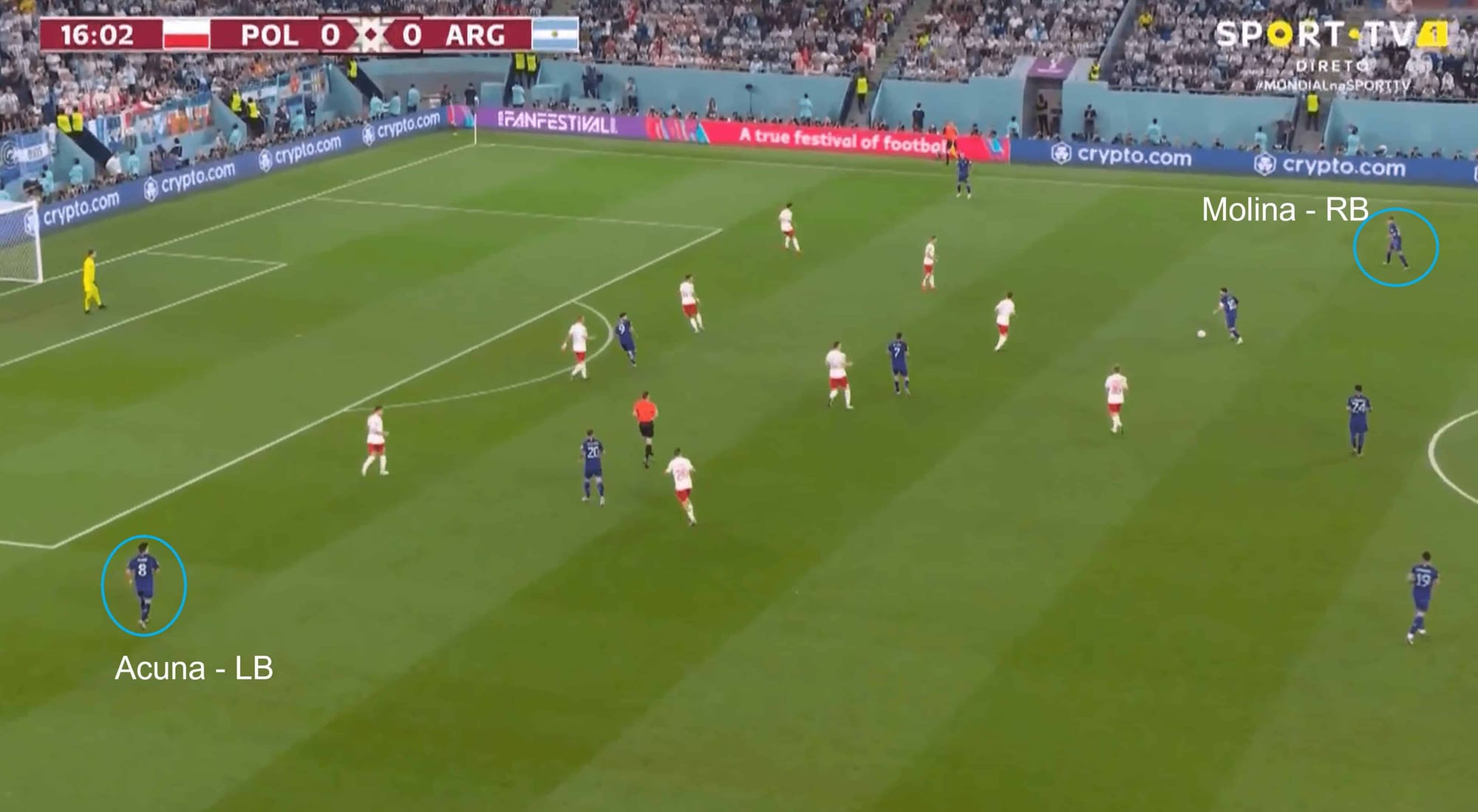
In the first half, there was a stark difference in the roles of Argentina’s full-backs for the most part. The image above summarises it nicely – Marcos Acuña would play as an attacking wing-back (almost as a winger, actually) – positioning himself high up the pitch where he would usually have plenty of space.
On the right flank, though, Nahuel Molina played a more traditional full-back role, not getting that far forward, and offering deeper support. This happened on multiple occasions, so it was clearly tactical from Scaloni, as he looked to try and unsettle Poland’s defensive set-up.
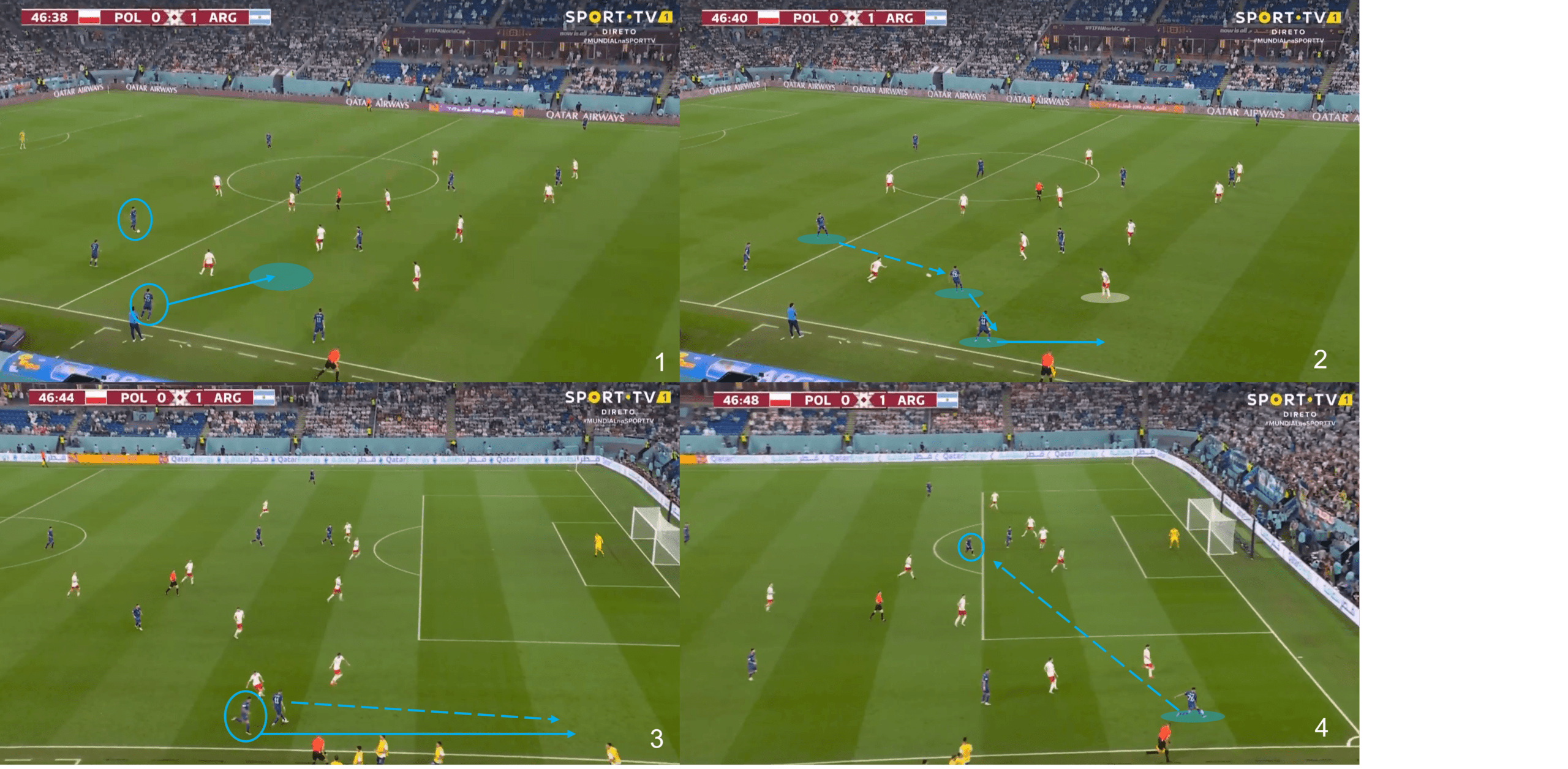
In the second half, we saw Molina take on more of an attacking full-back role, but it still differed from Acuña’s attacking wing-back role from the first half. Essentially, Molina would get forward as the attack requires, moving along with the attack, whereas Acuña would often start far up the pitch, ahead of the ball, awaiting possession to switch flanks.
Molina showed his quality in this role, playing an instrumental role in Argentina’s first goal, as seen above. In image one, he takes up his usual supporting position, before noticing a more dangerous space a few yards inside. He then quickly takes up that position, scanning for opponents as he receives the ball, before turning and quickly giving the ball to Di María. Eventually, the right-back makes an overlapping run with Poland’s defenders failing to contain Di María or mark the run of Molina. The move culminates with some individual quality from Molina who produces an inch-perfect first-time pass into the run of Mac Allister, who places the ball past the keeper. A move that required good awareness of space, movement, vision, and execution from Argentina, and Molina in particular.
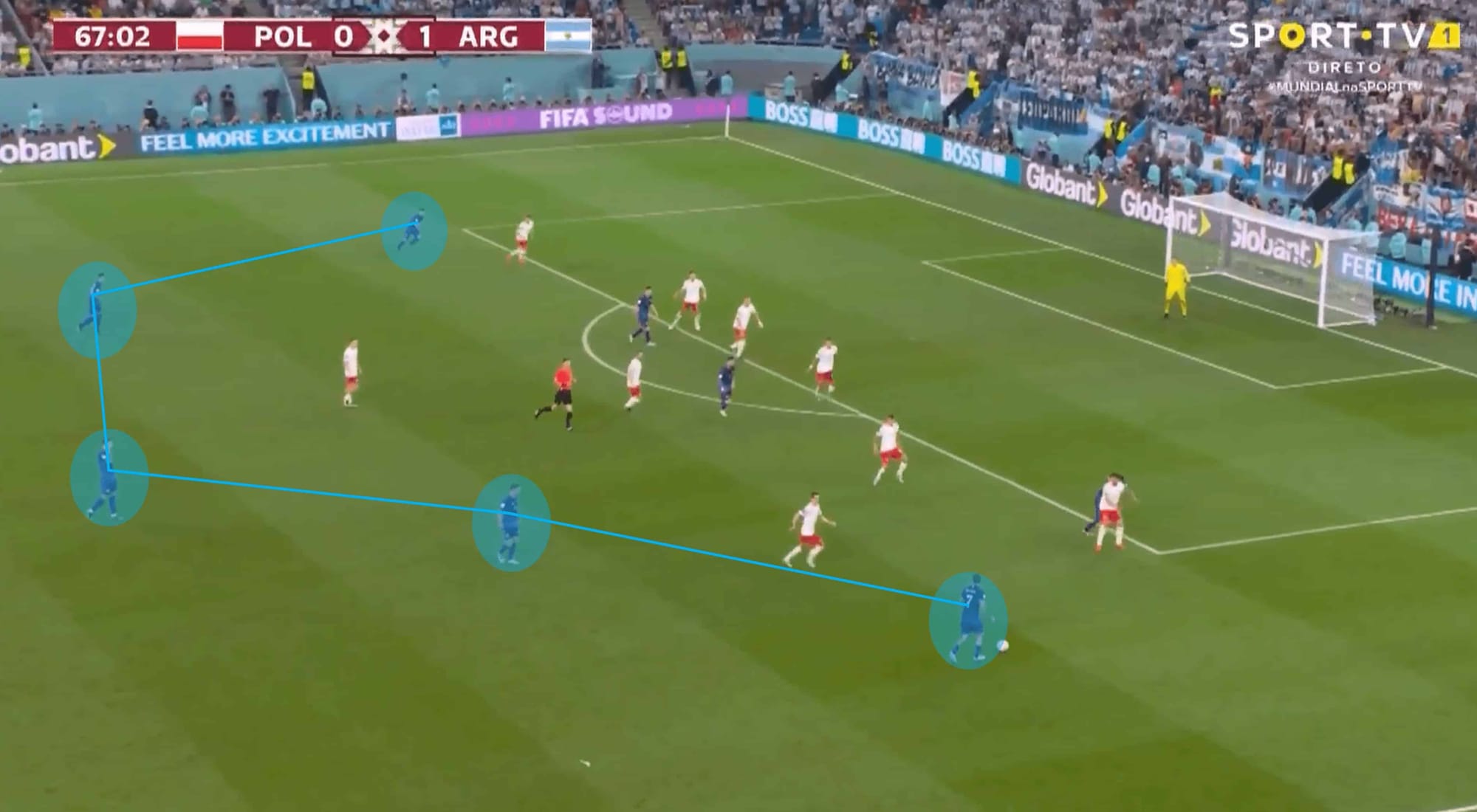
When we say Argentina dominated this match, it is not an exaggeration. A whopping 74% for Scaloni’s men, completing 868 passes with an accuracy of 92% (compared to Poland’s 317 passes and 77% accuracy). Their midfield shape was flexible, as mentioned, but at times of controlled possession deep in the Poland half, it was a solid shape that allowed them to pin their opponents in, but also protect against the counterattack, as seen in the image above.
That arc-like shape is a staple of many teams whose tactics take the route of possession domination as it allows for short and simple passes under little pressure. With this, Argentina still had a healthy number of players in and around the box to give Poland a lot to think about.
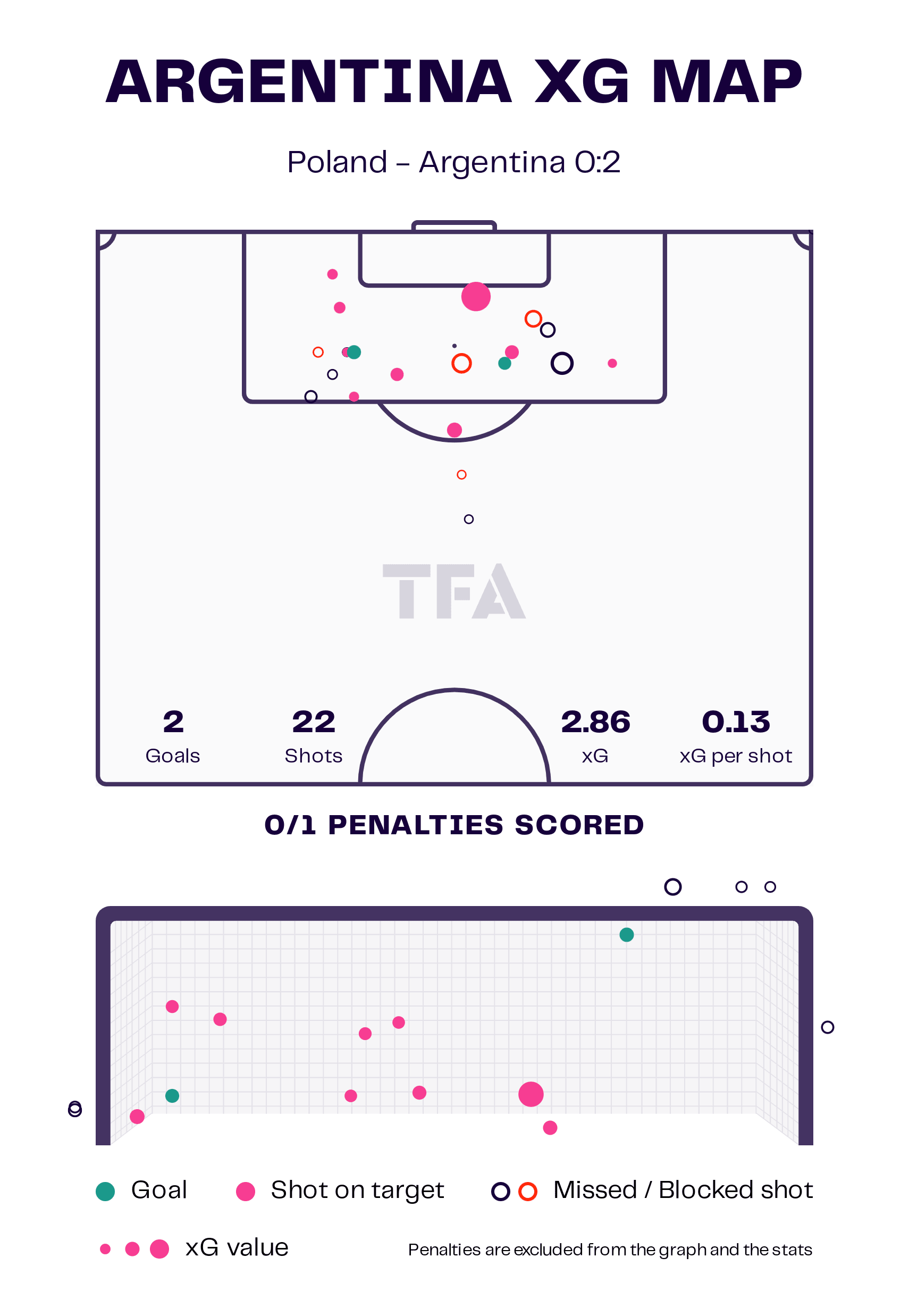
Here is a closer look at Argentina’s attacking presence in this fixture. Plenty of shots on goal, with an xG of 2.86, suggesting that they weren’t far off adding a third goal. Credit must also go to Poland goalkeeper Wojciech Szczesny for keeping the score down to 2-0, judging by the number of shots on target.
Why did Poland struggle in possession so much?
Frankly, Poland were lucky to only have conceded twice, but they will be more frustrated at the fact that they failed to land a glove on Argentina. They registered four attempts on goal, with zero on target – a highly disappointing attacking performance, especially with a player like Lewandowski in your ranks. This section will provide an analysis of Poland’s approach – how Argentina were difficult to break down but also why Poland did themselves no favours.
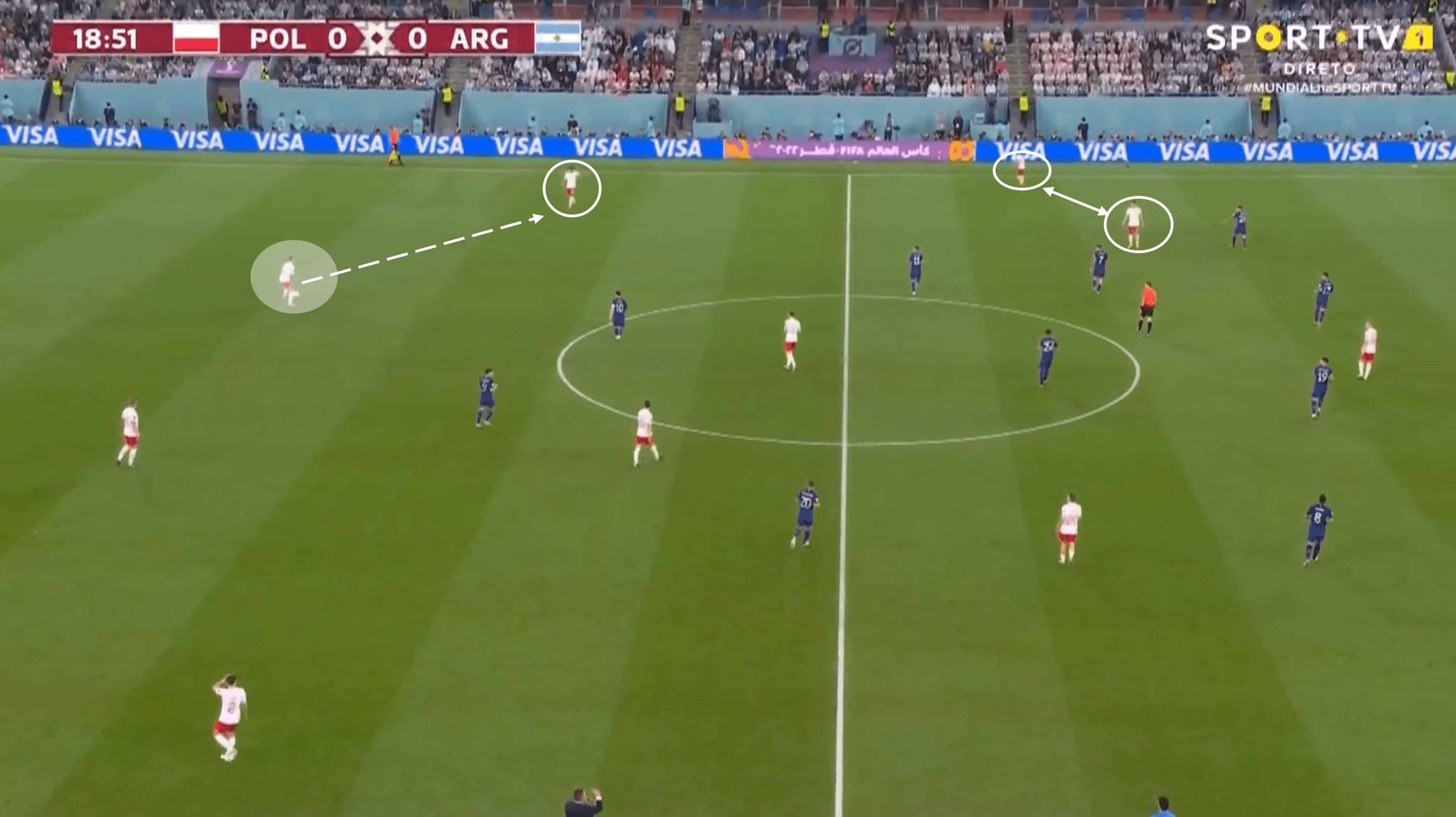
There wasn’t a great deal to analyse about Poland’s attack as opportunity was not their friend on the day. However, in times when they did see some possession come their way, they failed to make it count, despite a good initial shape.
Above, this is reflected. No pressure from the opposition, and good passing options to progress into the midfield third. Playing through wide areas should have been Poland’s primary focus as Argentina were very narrow off the ball, but they failed to really hurt their opponents, often opting for more of a direct approach instead.
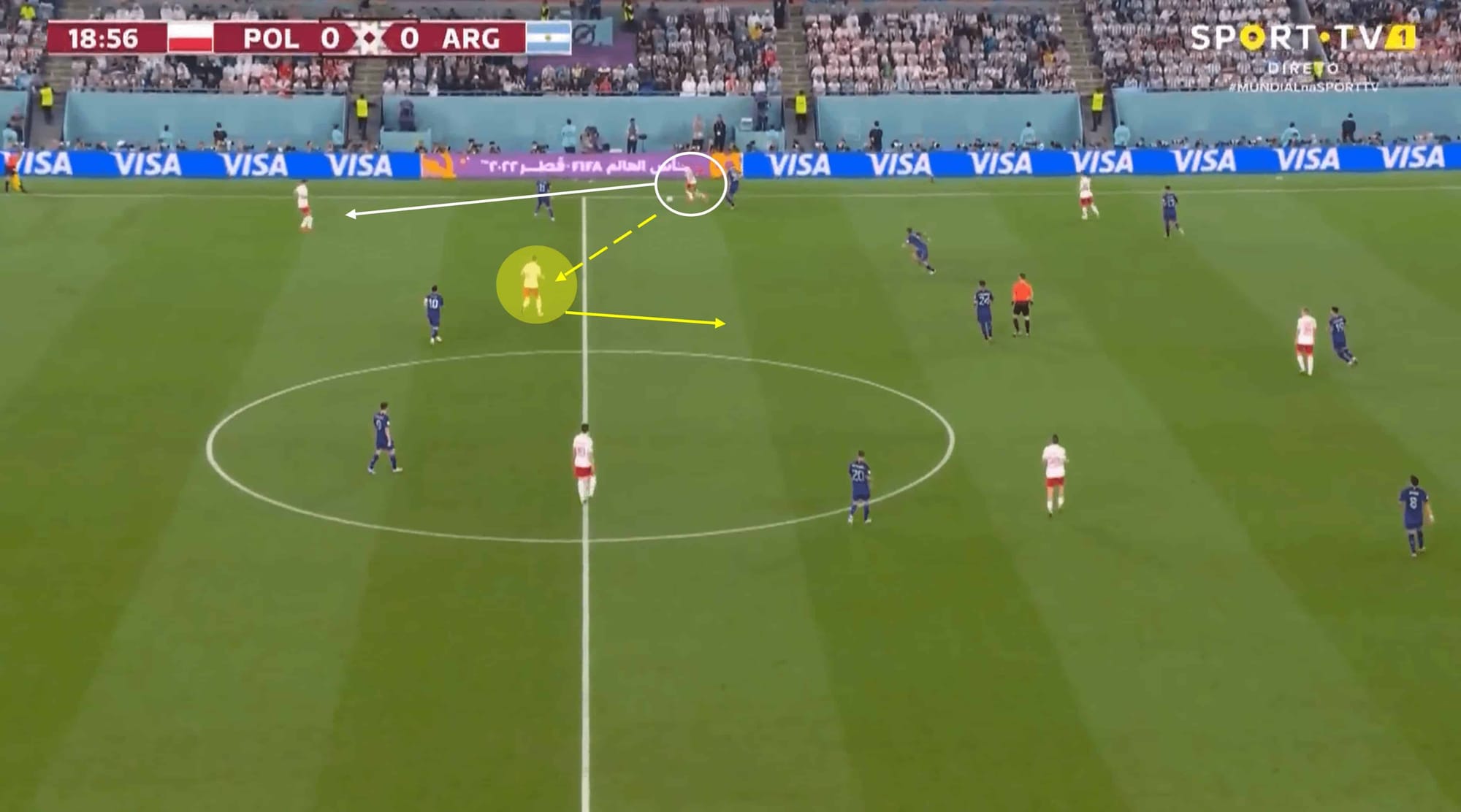
As left-midfielder Frankowski receives the ball, he comes under pressure, as you would expect in this area of the pitch. But the moment that follows this almost encapsulates Poland’s approach and their courage (or lack thereof) in this match. Frankowski had a perfectly good opportunity to play a pass in the middle to a teammate in plenty of space, and space ahead of him to drive into.
Before, the Argentina’s shape was compact, but due to the pressure being applied, space opened up in the central area, but Poland were not interested in testing the Argentines’ resolve. Instead of playing that pass into the middle that could have opened more attacking doors for his team, Frankowski played a backwards pass, giving possession back to the defensive unit in their own half. This slowed Poland down, and only gave Argentina the chance to push up slightly and apply some pressure to the backline.
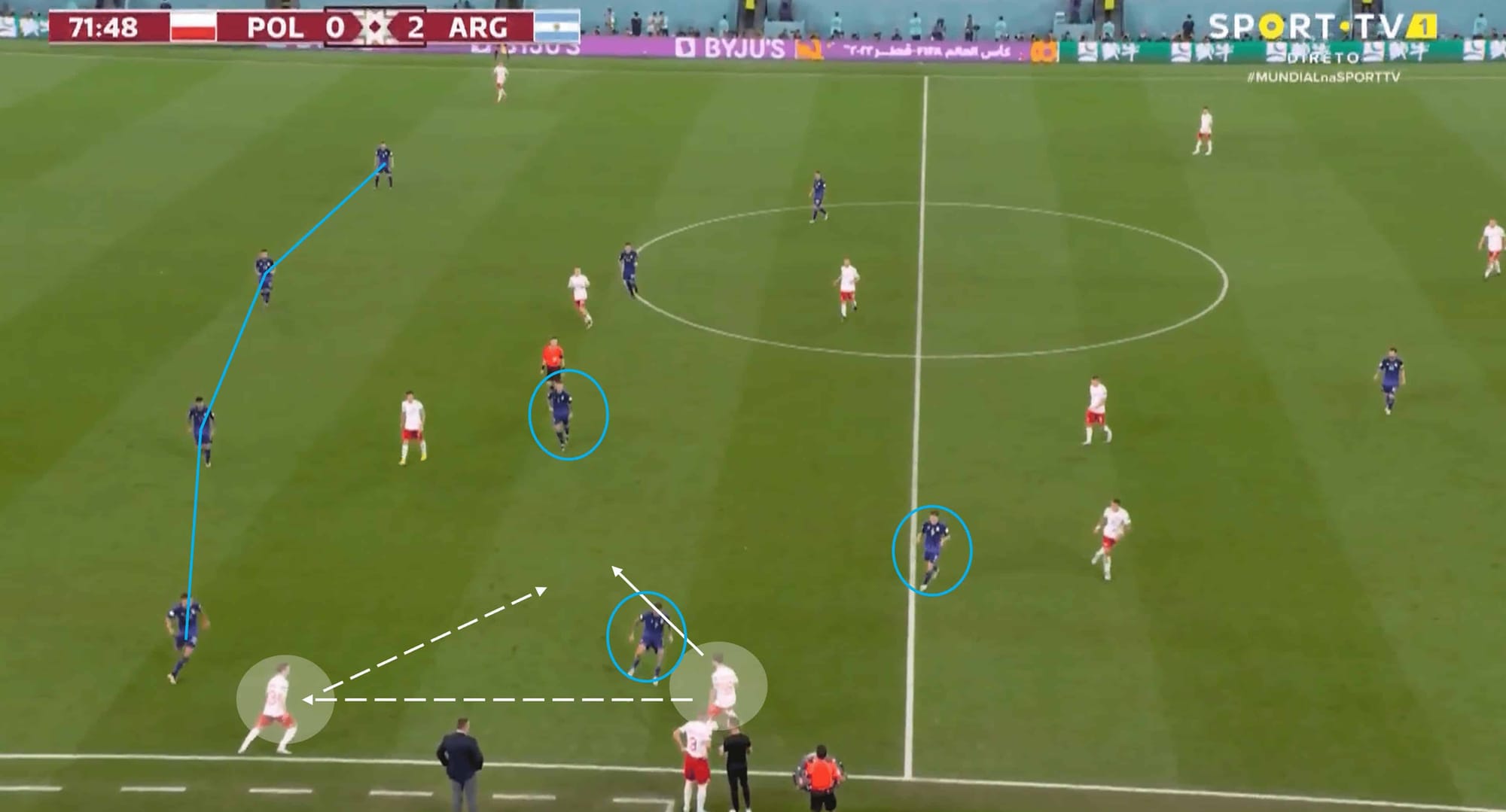
For the most part, Argentina were very good defensively. Even in times when Poland showed a glimmer of wanting to go forward, Argentina would almost suffocate Poland with good pressure. The nearby midfielders would mark potential passing options, with the closest player applying pressure on the ball. The back four would push higher up to limit Poland’s attacking chances, even more, leaving little room to work in. In a nutshell, there was no initial pressure on comfortable possession, but a mid-block paired with a triggered press.
Conclusion
Argentina were one of the favourites for many heading into the tournament. After a shock defeat in the first game to Saudi Arabia, alarm bells rang. But Scaloni kept the ship stead and his side have turned things around, and once again look like a formidable team. Their approach play in attack has some unique elements that are easy on the eye, and their pressure in midfield zones off the ball made it very hard for Poland to get into the game. Realistically, Argentina should still be talked about as one of the favourites.

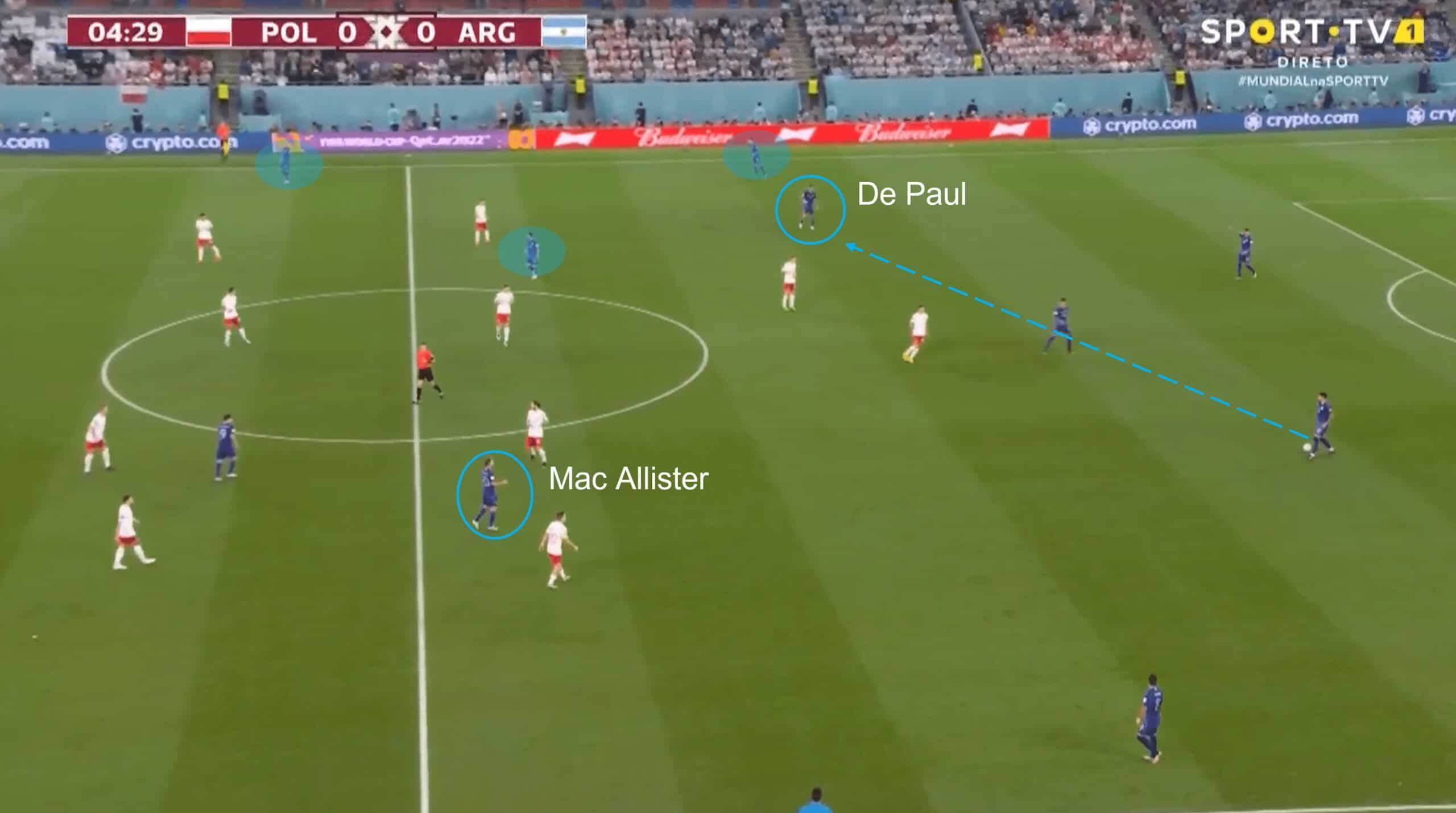




Comments